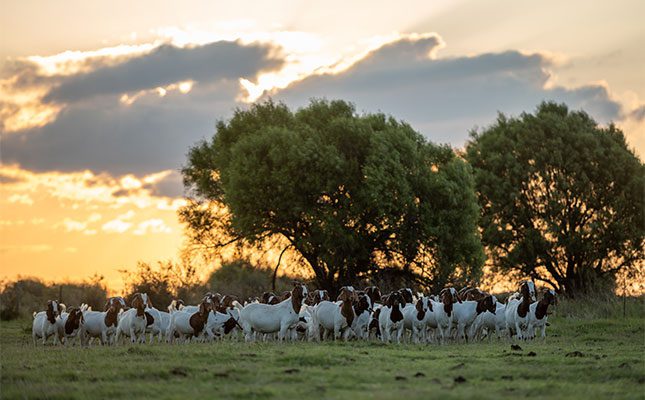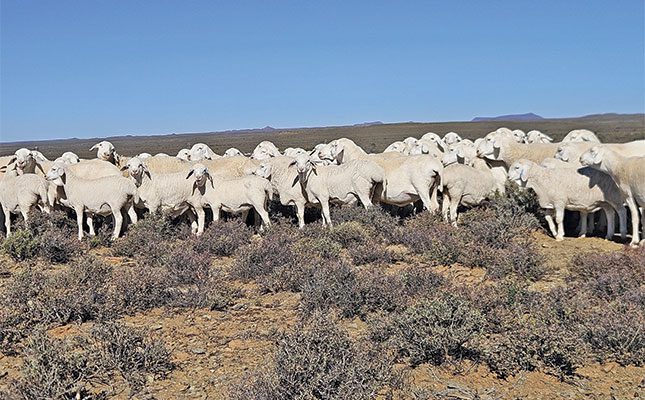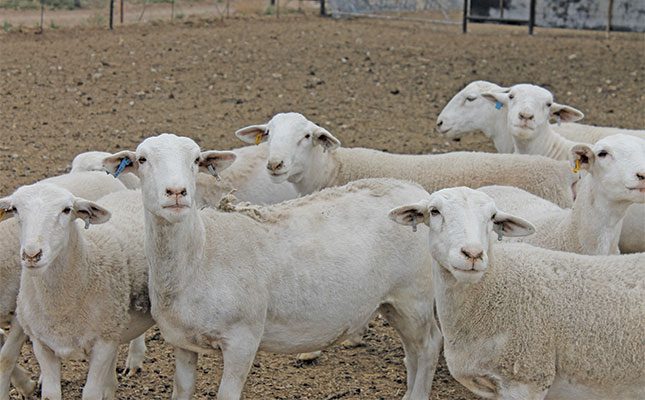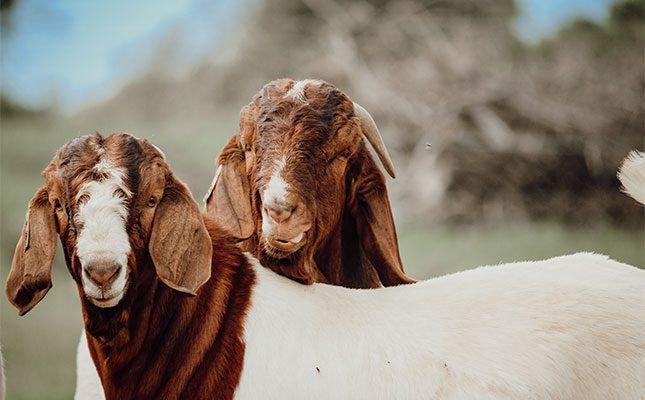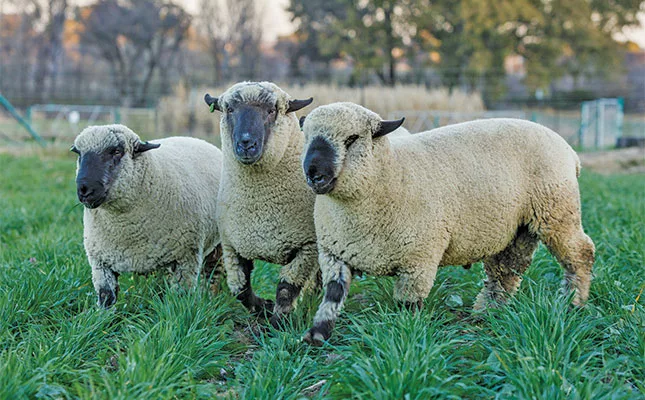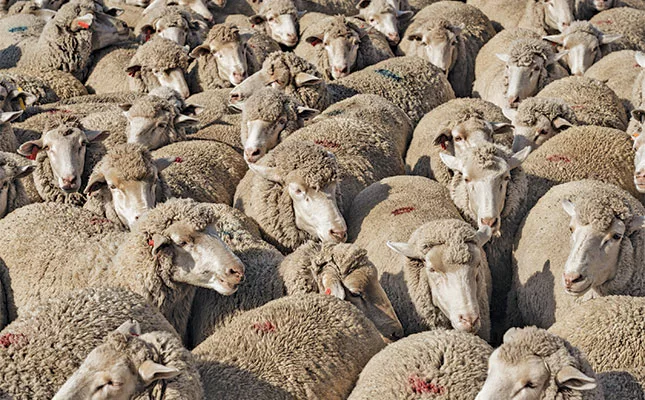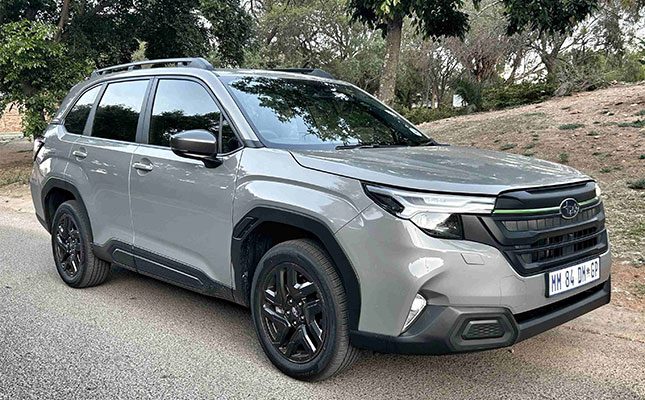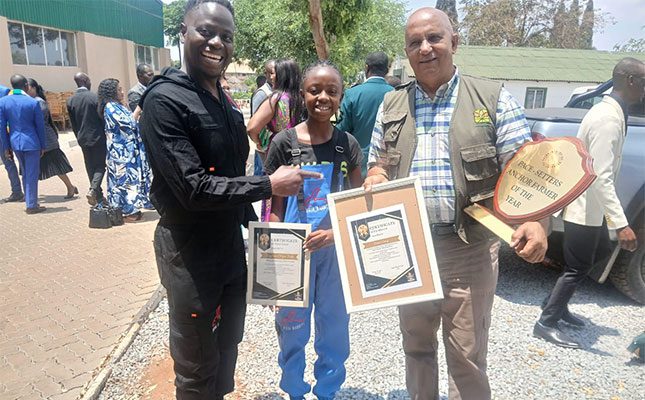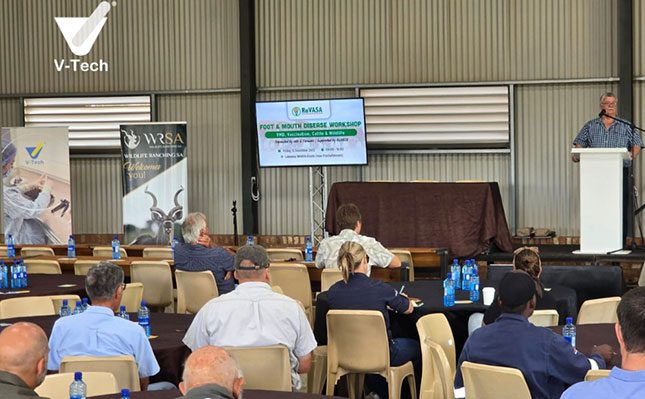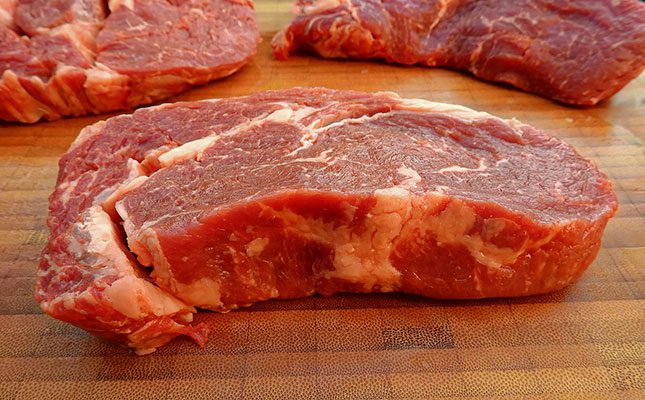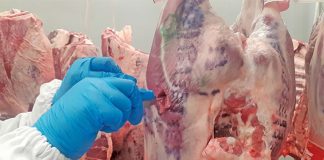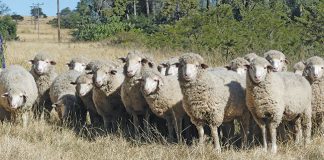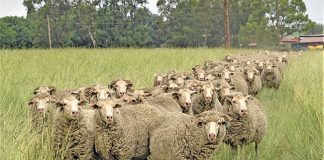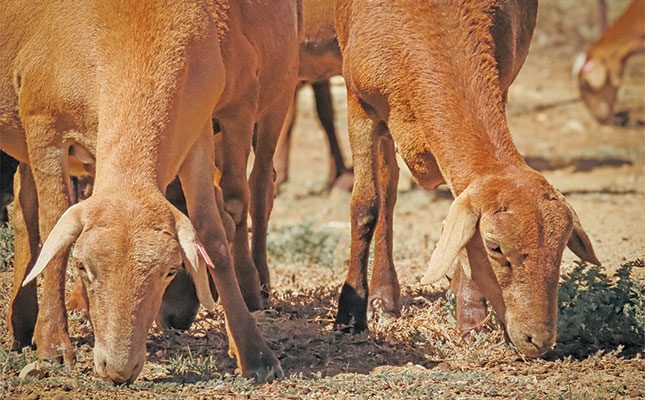
Photo: Landrani
After buying 100ha of land near Oudtshoorn in the Klein Karoo, Pieter de Wet decided to turn the land into a high-end ecotourism resort primarily aimed at overseas visitors.
To make the most of the beauty and solitude of the area, he built nine strategically placed luxury cabins and a restaurant overlooking the farm and Swartberg Mountains, and then populated the farm with game.
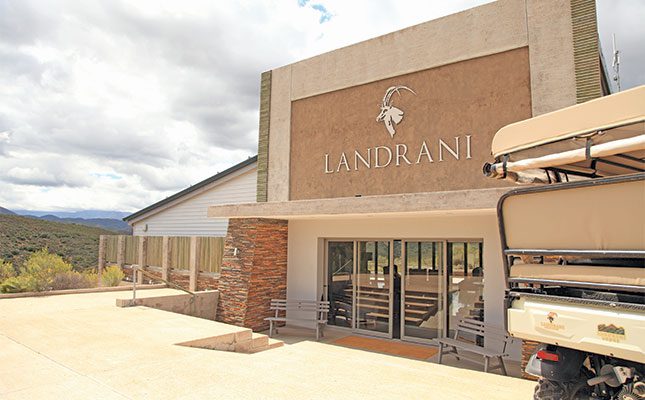
But the COVID-19 pandemic struck just when they were ready to open for business, resulting in travel bans that brought the global tourism industry to a standstill. Simultaneously, the game industry declined significantly, which led De Wet to turn to sheep farming instead.
His initial intention was to find a sheep breed that would blend into the farm environment like game, and he ended up with Meatmasters.
Further research proved the excellent value of the breed. “Meatmaster sheep are highly resilient, fertile, and make excellent mothers. They are highly efficient non-selective grazers, can thrive on low-quality veld, have a strong herd instinct that makes them easy to manage, and produce excellent meat and carcasses,” explains De Wet.
Sheep production
Soon after buying his first Meatmaster sheep, De Wet realised they were too heavy on the veld to be kept on a mere 100ha of land. After that, he challenged the norm of Meatmaster production by starting to farm this extensive breed in a hybrid system.
The ewes are kept extensively on rented land near Loxton in the Karoo for six months of their productive cycle. During this time, they are artificially inseminated, and their foetuses grow in a natural, stress-free environment.
A week before lambing, the ewes are trucked to the Oudtshoorn farm’s high-tech facility, which De Wet calls the Lamb Factory™.
The ewes stay here for up to a week after their offspring are born, depending on the number of lambs, after which they are moved to small camps until their offspring are weaned. Singletons are weaned at about 45 days old, twins at 60 days, and multiples at 75 days.
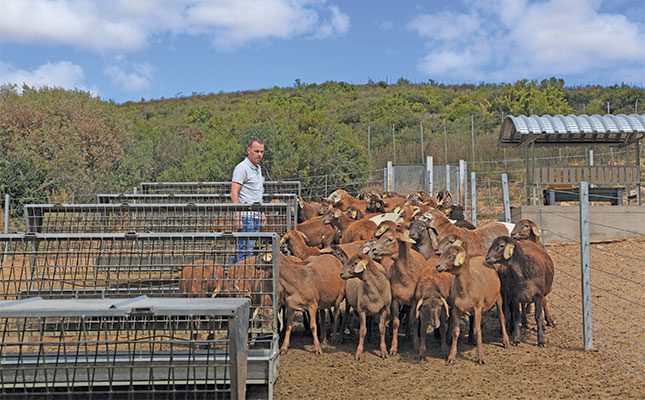
Once the lambs are weaned, the ewes are sent back to the Loxton farm to repeat the production cycle. They are divided into five groups of about 500 each that lamb over a period of eight months, resulting in De Wet being supplied with new lambs every six weeks.
Some people don’t like the idea that he is partially raising an extensive breed under intensive conditions, but he says it makes a lot of financial sense.
“My weaning and lambing percentages are about 30% higher than they would have been if the ewes had stayed on the land, where they would have been exposed to predators, theft and environmental stressors. This [increase] more than compensates for the transport and feeding costs associated with the dual production system,” he says.
Non-breeding offspring are moved to automated feeding systems, where they are rounded off until they reach optimal weights of 43kg to 45kg, typically at three to four months of age.
“Most farmers sell their lambs at eight to nine months of age, whereas we sell earlier to supply the market with a leaner, high-value product. You can call it the veal of sheep. Most people who taste the meat say it is the best they have ever tasted,” he explains.
Rams with stud potential are sent to the Loxton farm, where they are evaluated to ensure only the fittest are kept.
The rams receive a specially formulated roughage ration from three months of age to prepare their rumens for the move to the Karoo, while the ewes with stud potential receive it from four months of age to support critical udder and rumen development. They are sent to the veld in the Karoo once they are six months old.
De Wet doesn’t want to divulge much about the ration, but reveals that he uses a process in which urea is hydrolysed into ammonia and carbon dioxide, which the sheep then use to synthesise amino acids. The process allows him to increase the wheat straw protein content from 4% to over 16%.
To prevent confusion over the parentage of lambs, he started experimenting with using Dormer instead of Meatmaster rams on ewes as a follow-up after artificial insemination.
Comparing the Dormer-Meatmaster cross lambs with purebred Meatmaster lambs, he found that the crossbred lambs were more aggressive growers, weighing roughly 22,2kg compared with the 19,8kg of the pure lambs at 60 days, when the lambs are weaned.
The crossbred lambs were also slaughter-ready at an average of 3,6 months, compared with the 4,2 months for the purebred lambs.
Nevertheless, he stopped crossbreeding the ewes because the purebred offspring are physically longer than the crossbreeds, resulting in extra four-rib chops from these lambs’ carcasses.
Direct supply
De Wet makes use of the Sandler Pain Funnel, which forms part of the Sandler Sales System, to uncover ways to optimise income from sheep production. With this approach, specific problems or ‘pain points’ are identified that negatively affect sales.
He says there are many pain points in the red meat industry, but the ones that stand out for him are stock losses, which he addresses with his hybrid production system, fragmentation of the supply chain, transparency, and scale.
“The biggest problem for me is that you have about seven role players from farm to fork, who all want to make a cut from a 25kg lamb. I realised early that I would need to market directly to the consumer if I wanted to make sustainable earnings, so I created the Landrani® Lamb brand,” he says.
The name is a portmanteau of the names of his wife, Andrika, and children, Lani and André.
To create a market for his meat, De Wet turned all the cabins in the resort into self-catering units before he reopened the resort in March 2024.
“Our initial plan was to supply guests with all their meals from our restaurant, but now we also supply them with chops, wors, and delicious ready meals, such as lamb curry, pies, lasagna, bobotie, and spaghetti and meatballs, all made from sheep produced on the farm.
“The beauty of this is that it creates a positive connection with the farm, which motivates people to seek out the brand in future,” he says.
De Wet adds that the ready meals, some based on his family’s recipes, help add value to lower-quality cuts and reduce waste.
But he has much bigger dreams than merely selling Landrani lamb and mutton from the farm.
He has started offering entrepreneurs an opportunity to act as ‘taste centres’ within their communities, where people can taste and buy the Landrani product range; and partnering with delis, restaurants and coffee shops to display and sell his lamb and mutton products and feature them on their menus.
Involving other sheep farmers
To create meaningful volumes, De Wet offers farmers access to his farm’s prized Meatmaster genetics and allows them to join the Landrani value chain by buying a minimum of 40 ewes and one ram from him.
Genetics on offer are available on the Landrani Meatmasters app (available for Apple and Android devices) and displayed in marketing pens at the Oudtshoorn farm, with a live camera feed that enables potential buyers to observe the animals.
The animals also come with production and pedigree records to allow potential buyers to make informed purchasing decisions.
De Wet developed his own Landrani Production Index, which is a further benchmark used to compare his genetics against SA Studbook averages for the Meatmaster breed.
Artificial intelligence (AI) is used to analyse the data and provide a genetic summary to the prospective buyer.
Young ewes sell for between R2 800 and R3 200, and older ewes are slightly more expensive. All selling prices are calculated via AI based on production data.
To set them up as vendors, farmers are supplied with ‘packed lamb cuts’ as frozen product equalling the number of ewes they bought. Once the ewes produce offspring, De Wet buys the lambs for R1 000 each, and the farmers earn 20% commission on every product sold as vendors.
Farmers can also gain access to fully equipped food truck trailers that allow them to sell Landrani products directly to consumers at markets, events, or from their own farms.
“This approach allows farmers to move up the value chain and generate extra farm income without having to make the huge investment that we did to build the market and product range,” explains De Wet.
At a lambing percentage of 120% and an eight-month reproduction cycle, he estimates that farmers can earn returns of R3 240 per ewe per year with this business model.
Technology
De Wet also makes use of various technologies to improve production efficiencies, add value to production, and guarantee that his meat is produced in an environmentally responsible way and without the addition of any hormones or routine antibiotics.
With his background in digital technology, he has developed various platforms and systems to monitor, record and trace production. His IntelliFarm™ sheep-management app, for instance, helps with herd and production planning.
De Wet says the app allows for the automated scheduling of dosing, the synchronisation of ewes and artificial insemination, the putting in and taking out of rams during the mating season, the cleaning of pens, and much more.
It helps to keep records, such as animal weights, vaccinations and other ad-hoc treatments, reproduction, mating, and feeding records in one easily accessible place.
De Wet explains that each sheep is fitted with a radio-frequency tag shortly after birth to ensure accurate record-keeping and, in effect, traceability. The tags are scanned with a handheld radio-frequency scanner and records are updated on the sheep-management platform.
“If you buy Landrani meat, you will be able to see where the animal is from, its slaughter age and the day of slaughter. So far, no other company offers this service,” he explains.
While automated feeders are used in the intensive production system to supply sheep with their required rations, workers in charge of the kraal are required to take photos of every drinking and feeding bucket each day to show that the animals have access to enough feed and clean water.
This also serves as a form of record keeping, as De Wet can see exactly who was responsible for which kraal when looking at the photos.
“Control is critical during this stage of production. Failure to supply the sheep with enough feed or water could result in stress, which could lead to diseases and mortalities,” he explains.
To ensure optimal meat quality, the carcasses are hung and drained for seven days after slaughter to relax and settle the muscles and solidify the fat.
De Wet points out that most other suppliers do not follow this practice, because it results in reduction in the weight of the carcasses of as much as 7%.
Cryovac® SKIN technology is used for packaging the meat. De Wet explains that traditional freezing results in a lot of the moisture leaving the meat during defrosting, which leaves the meat dry.
Cryovac prevents ‘meat fluids’ from freezing and, in effect, getting lost in the form of ‘blood water’ when the meat is defrosted.
“One might be tempted to take shortcuts with some of these protocols, but I have learnt over time that they work together to give us the excellent-quality meat that we aim to produce.”
He adds that people sometimes criticise him because he always has “so many plans”.
“I prefer to have multiple plans, with only a couple of them succeeding, and then go back to the drawing board to fine-tune the others, rather than having only one or two plans that don’t work out,” he says.
Email Pieter de Wet at [email protected].

